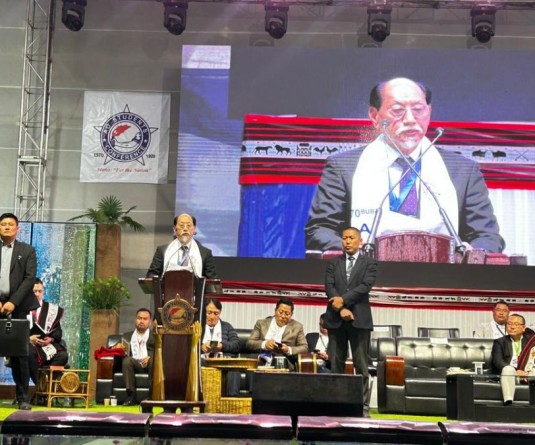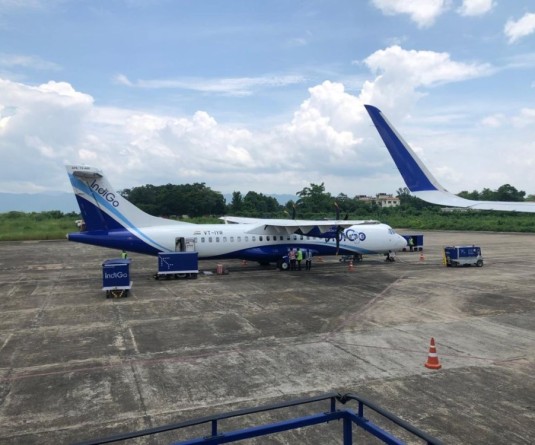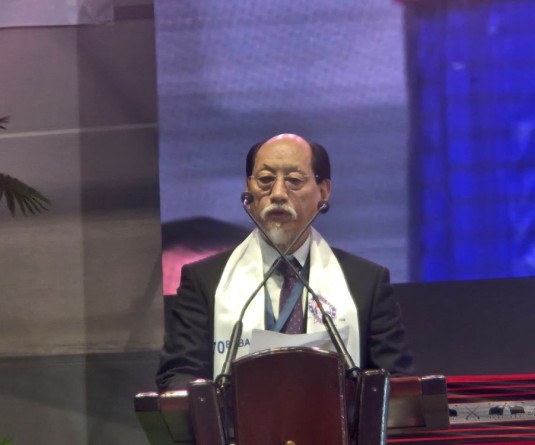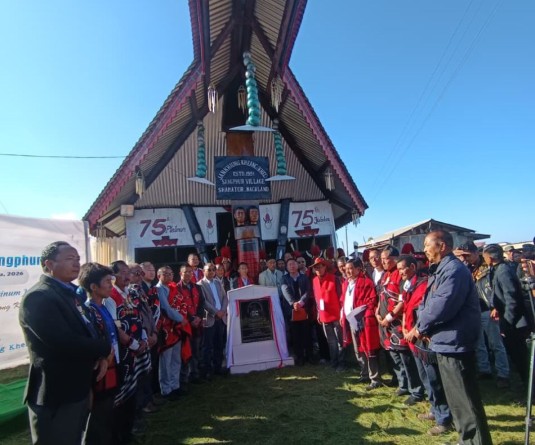As part of Goal 4 of the Nagaland SDGs vision 2030, the State aims to create an education system that is more accessible, inclusive and responsive to the needs of diverse groups of children and young people. (Morung File Photo by Moses Hongang | For representational purpose only)
.jpg)
Nagaland SDG Vision 2030 aims at 100% literacy rate, enrolment
Our Correspondent
Kohima | August 22
The Nagaland Sustainable Development Goals (SDGs) Vision 2030 in its Goal-4 on Quality Education stated that it would focus on ensuring inclusive and equitable quality education and promote lifelong learning opportunities for all.
By 2030, it aims to eliminate gender and other disparities at all levels in education and ensure equal access to affordable and quality education as well as vocational training for all.
The 2030 targets include 100 percent literacy rate, 100 percent enrolment in primary education, zero percent or near 0 percent dropout rate at school level, 100 percent or near 100 percent pass for primary education and 100 percent enrolment rate of children with special needs.
Strategies for success
The vision statement said that the focus is on creating an education system that is more accessible, inclusive and responsive to the needs of diverse groups of children and young people.
The aim is to build a state where students enjoy learning and teachers enjoy teaching, it stated.
By enhancing opportunities for skill development, employability and entrepreneurship and building competencies for life and work, Nagaland will benefit from a population that has an increased skill capacity better able to embrace the modern economy through varied strategies.
Strengthening Anganwadis, early childhood education
The menu of the midday meal provided in Anganwadis, is as per the Centre’s guidelines and is not locally aligned to the taste buds of the population in the state, it stated.
Hence, there is an urgent need to customize the Anganwadi menu to cater to the local taste and incorporate locally available agriculture produce. In addition, Anganwadis and schools aim to have a strong coordination channel of communication which will help in improving learning outcomes while providing a seamless movement of students from Anganwadis to primary schools.
The state government also plans to immediately give due importance to classless Nursery/ A and B which are not covered under RTE Act 2009.
The department of school education has proposed to introduce early childhood education between 2020 and 2030 where teachers holding diplomas in early education (D.DI.Ed) shall be engaged.
For this, additional two classrooms along with play requirements and Teaching Learning Materials (TLM) will be required in all 1,069 Government Primary Schools.
Improvement of infrastructure
The focus of the government will be to upgrade infrastructure in order to benefit teachers and students.
Currently, there is no HRDC present in the state; the focus is to set up a state level HRDC in collaboration with Nagaland University (NU) to impart orientation and refresher courses.
The state government aims to upgrade infrastructure facilities for all levels of education. For example the All India Council for Technical Education (AICTE) has identified infrastructure deficiencies in existing technical institutions/polytechnics.
The department of technical education plans to upgrade, improve the infrastructure of all the deficiencies faced by technical institutions during 2020-2030.
The vision statement stated that efforts towards digitization have been planned at all levels- school, higher and technical educational level.
At the school education level, there are digitization efforts suggested from the perspective of students and teachers.
Smart classrooms
The target, as per the vision statement, is to have Smart Classrooms in 110 Government Middle Schools and 110 Government High Schools (Five schools in each district) between 2020 and 2030.
The department of school education plans to implement Smart Classrooms in all Government Middle Schools and Government High Schools with infrastructure facilities.
With regard to Government Higher Secondary Schools, the aim is to introduce e-classrooms and ICT in all GHSSs across Nagaland by 2030.
Posting of mathematics and science teachers will be done on time and the aim is also to make sure that teaching aids are delivered to school prior to the academic sessions in January-February.
At the technical education level, from 2020-2022, the Directorate of Technical Education plans to implement digital libraries and smart classrooms across all six polytechnic institutes of technical education.
The focus is to make all technical educations IT-centric educational institutions.
Strengthening higher and technical education
From 2020-2030, the state government will work on the industry-institute interaction project wherein, it will revise existing curriculums in order to meet market/industry requirements so as to give locally relevant opportunities to graduating students.
The students will also get the opportunity to get hands-on experience in the industry.
Under the Entrepreneurship Development Programme, technical education institutions aim to provide students with courses to pursue self employment.
Between 2020 and 2030, the state government plans to conduct skill building activities in the 6 polytechnic institutes by inviting successful entrepreneurs to provide exposure to the students.
Under National Board of Accreditation, from 2020 to2030 (first phase) and 2024-2027 (second phase), the state government will be focusing on ascertaining weakness and strengths and identify as well as take action to improve programmes as part of the Quality Education mandate set by AICTE through accreditation of the existing institutions.






